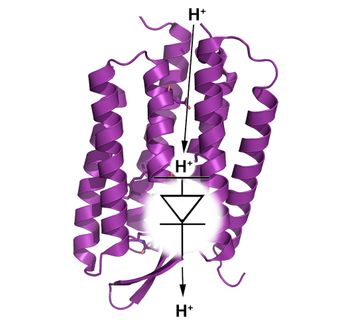New chemical imaging technique could help in the fight against atherosclerosis, suggests research
Advertisement
A new chemical imaging technique could one day help in the fight against atherosclerosis, suggests research published in the August 2009 edition of the Journal of the Royal Society Interface.
Atherosclerosis is the disease underlying most heart attacks and strokes and it is characterised by lesions in the arteries, made of fats, collagen and cells. The lesions cause artery walls to harden and thicken, which severely restricts the flow of blood around the body and they can also rupture, leading to heart attacks and strokes. Understanding the precise chemical composition of an individual's lesions is important because the ones with higher levels of a type of fat called cholesteryl ester are more prone to rupture.
The team behind the new imaging technique, which is known as Attenuated Total Reflection Fourier Transform Infrared Spectroscopic Imaging (ATR-FTIR imaging), believe that with further refinement, it could become a useful tool for doctors wanting to assess a patient's lesions. For example, by combining fibre optic technology with ATR-FTIR imaging, the researchers believe doctors could carry out real-time inspections of patients with atherosclerosis, in order to assess the progress of the disease and establish which patients are at the greatest risk of complications.
Currently, doctors can use ultrasound to assess the size and location of lesions but they need to take biopsies of lesions in order to determine their chemistry. This is a complex and invasive procedure.
The researchers say the ATR-FTIR imaging could potentially improve current imaging techniques because it could combine imaging and chemical analysis, which would provide a comprehensive and accurate picture of a patient's lesions in one procedure. In the present study, the researchers demonstrated that ATR-FTIR imaging was able to reveal the precise composition and size of the lesions and the levels of elastin, collagen and cholesteryl ester in them.
The ATR-FTIR imaging technology works by using infrared light to identify different chemical molecules, which are mapped by an array detector to create a 'chemical photograph'.
The researchers used the technique to study the effects of age and an amino acid called L-arginine on the composition of lesions in cholesterol-fed rabbits. The work appeared to confirm that dietary L-arginine can remove lesions in the arteries of mature rabbits.
The researchers say further studies need to be done before the ATR-FTIR imaging could be used for patient care.
Lead-author, Professor Sergei Kazarian, from the Department of Chemical Engineering and Chemical Technology at Imperial College London, says:
"Atherosclerosis can be a dangerous condition and our hope is that with further work, our approaches could ultimately be used to determine which patients are most at risk of complications. That way, doctors can target treatments at those patients who most need it, in order to prevent strokes and heart attacks."


































































